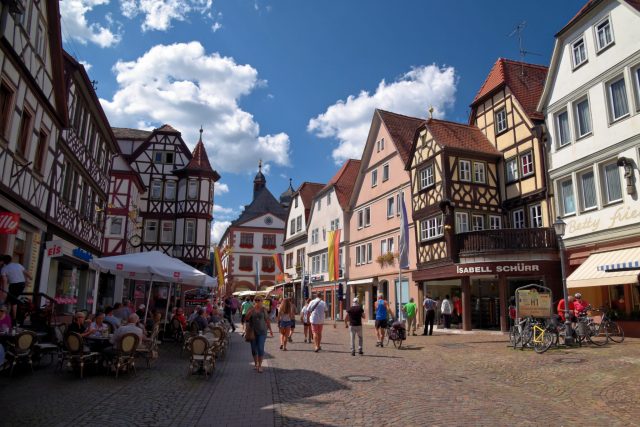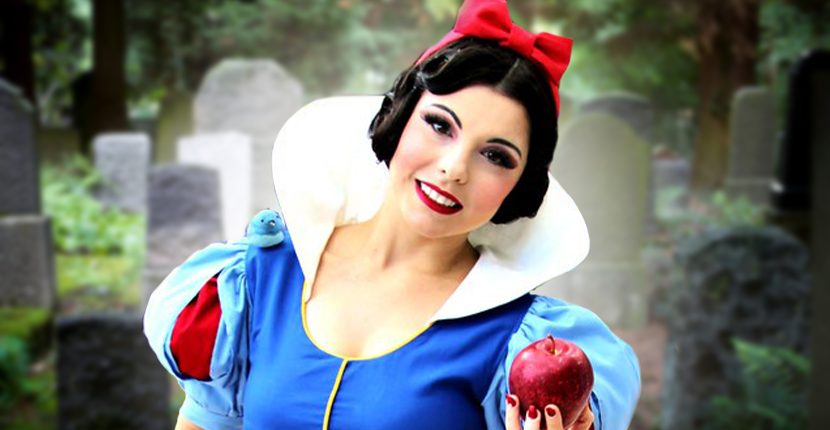Could Snow White have been real? We often imagine that fictional stories contain within them at least a grain of truth; perhaps the setting shares a likeness to the author’s home town, or the hero is someone strikingly possessed of qualities like the writer. Fairy tales? Not so much. After all, who ever heard of an actual big, bad wolf disguising himself as a little girl’s grandma and hiding in her bed? No, fairy tales are called tales precisely because they bear no likeness to any reality.
Turns out, that assumption is mistaken, at least in the case of the fairy tale, Snow White and The Seven Dwarfs. There is a real life baroness behind the story’s heroine, Maria Sophia von Erthal, who lived in a castle near the town of Lohr am Main, in northern Bavaria in the mid-18th century, and died in 1796.

Experts believe that von Erthal served as the inspiration for Snow White, the classic tale of a virtuous maiden who lives with seven dwarfs, all of whom work in a mine. The baroness’s gravestone was recently donated by a family to the Diocesan Museum, in Bamberg, in southern Germany. Its director, Holger Kempken, likes to think the story of the baroness as the basis for the fairy tale girl is, at least in part, true. He recently told BBC News, “The story of Sophia’s life was well known at the start of the 19th century,” he began. “The Brothers Grimm made literature out of the stories they heard from local people.

“There are indications,” he continued, “though we cannot prove it for sure – that Sophia was the model for Snow White. Today, when you make a film about a historical person, there is also fiction in it. So, in this case, I think there is a historical basis but there (are) also fictional elements.”
And just what are the parallels between the tale of Snow White and the baroness, and her environs? As it turns out, there are quite a few.

The fairy tale tells of a young girl who escapes a wicked stepmother, and falls under the care of seven dwarfs who work in a mine. One day, she falls into a deep sleep after biting into a poison apple, courtesy of the mean, evil stepmother. But she does not die, and while resting in her glass coffin, she is discovered, and kissed, by a fabulous prince and the two – of course – live happily ever after.

Sophia’s father did indeed choose a second wife who was horrid to her stepchildren, and favored her own. Lohr was known as a hub for glass and mirror making, and Sophia’s father owned just such a factory. There was a mine nearby, reached by crossing over seven hills, just like in the story. Children and dwarfs worked in the mine.
And perhaps most revealing is the fact that Jacob and Wilhelm Grimm lived just 50 miles from Lohr. They could quite easily heard of Sophia’s life, and used her as the inspiration for their maiden.

Alas, Sophia did not have quite the “happily ever after” ending that Snow White did. She lost her eyesight as a young woman, and though she lived to be 71 – a ripe old age in the late 18th century – she died a spinster, in a convent.
She never even came close to finding her prince. However she had a gravestone, and that was something most women did not get back then, when she was buried on the small grounds of a local church. When the church was razed to make way for a clinic in 1971, a local family kept it safe, then donated it to the museum in Bamberg.
Related Article: Disney Left Out the Most Gruesome Aspects of the Original Snow White Story
There is no way to be absolutely sure the baroness was the model for Snow White, but it’s a wonderful thought. And while her gravestone makes references to resurrection, she no doubt couldn’t imagine herself living on in a fairy tale, and countless cartoons and Walt Disney movies.
